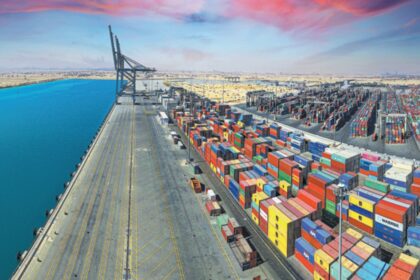Wangmo, 28, is a keen observer of the environmental and seasonal changes around her. She is concerned about what impacts the ecosystem of Tibet, as she has been working as an environment officer for the last three years in the Tibetan Women’s Association. For the people, the Tibetan environment is not something external to their existence; rather, the river, lands and animals for the people of Tibet are their God.
“Tibet is a mineral-rich region with more than 120 minerals present, like gold, copper, and lithium,” she says.
She believes that lithium mineral extraction has some undesirable environmental impacts that must be considered for a sustainable transition towards clean energy. Seventy percent of China’s reserves of lithium are found in the form of salt lakes in the region of Qinghai and Tibet. Two methods for lithium extraction are primarily used in the world, depending on the type of lithium deposit that is present, either in the form of brine-salt lakes (groundwater rich with lithium) or hard rock. A mineral-rich brine is pumped out of the ground, and after the water evaporates, lithium carbonate is filtered through it. There is a chance of leaking toxic chemicals like hydrochloric acid from these evaporation pools.
In 2016, local communities near the Lichu River in Kangding, Garzê, eastern Tibet, protested with dead fish and farm animals that were affected by the contaminated lake water linked to lithium extraction.
“Rongda Lithium Co. Ltd., a Chinese mining company extracting lithium, has been using toxic chemicals for lithium extraction that leaked into the Lichu River, affecting the community of Miyal Lhagang, killing their fishes and animals on more than one occasion.” She says.
“The water in the lakes and rivers is their livelihood; it is the God of the nomadic Tibetan people. A minor intoxication of local water can harm the whole community, and China has been ruthlessly extracting lithium for their economic gains, not caring about the environmental impact of it. Electric vehicles should be a green transition for everyone, not just for one country, ” Wangmo argues.
She also adds that BYD Auto, which is a Chinese company that manufactures electric vehicles, is also responsible for lithium extraction in Tibet.
“Everyone is hopeful for electric vehicles to reduce the global carbon dioxide emissions; there is no doubt in that, but we have to make sure that in the process of manufacturing electric vehicles, the environment is not damaged as an externality.”She says.
John Jones, Free Tibet’s Campaigns, Policy, and Research Manager, was involved in a research report.
“BYD in Tibet: the costs of lithium extraction” says that what happened in Tibet is the manifestation of what can go wrong if you don’t bother to care about the environment.
“Lithium mining can be cleaner than this; it can be done in other ways, but without the consent of Tibetan people, it is a two-fold exploitation of both the environment and the people living in it.”He says.
The report mentioned that from the year 2012, more than 12 protests had taken place in Tibet. The report also quotes:
“Lake Zabuye, a massive salt lake in eastern Tibet, is the principal source of lithium within the People’s Republic of China. In 2010, BYD also bought an 18 percent stake, making BYD the first electric vehicle manufacturer in the world to own its source of lithium.”
“Mining lithium in a desert-like area where there are no people, rivers, or infrastructure around makes sense, but mining in a region where there are towns nearby does not make sense, because it directly harms the communities’ ecosystem.” Says Savo Manojlovic, leader of Serbian Environmental Protests.
“Serbia is a small country, and mines are present near the population, and our people could not afford such high-risk mining,” he adds.
In January 2022, after massive protests, the government of Serbia revoked the license of Rio Tinto Lithium, stopping it from extracting lithium in Serbia as it would contaminate water and damage the landscape. Most of the lithium present in Serbia is in the form of hard rock, which releases more toxins than the brine harvesting method of extracting lithium.
“Rio Tinto has a history of environmental degradation, human rights abuses, and exploitation throughout the world. Just because it is mining lithium this time in the name of the green energy transition is not enough for the people of Serbia to allow them to come on their land,” Salvo says.
Minerals and lithium are extracted from developing countries whose policies and government control are weak, making it easy for companies to exploit the environment, using cheap labor.
“Minerals mined in the poor countries are being used for electric vehicles in the rich states, leaving the poor states at the mercy of environmental risks and climate change,” says Ronald Stein, the author of “Clean Energy Exploitation.”
Mining lithium and driving electric vehicles have a lower carbon footprint, but whatever little costs they have are a burden only on poor countries like Congo.
Geographically, most of the lithium is concentrated in a few states like China, Chile, and Australia. The whole world depends on these reserves of lithium for its transition from petrol-driven vehicles to electric vehicles. Rechargeable batteries use a various number of raw materials such as lithium, nickel, manganese, cobalt, and natural graphite. There are challenges with how these metals are sourced, what their environmental footprints are, and how their rising demand would be met in the future.
















